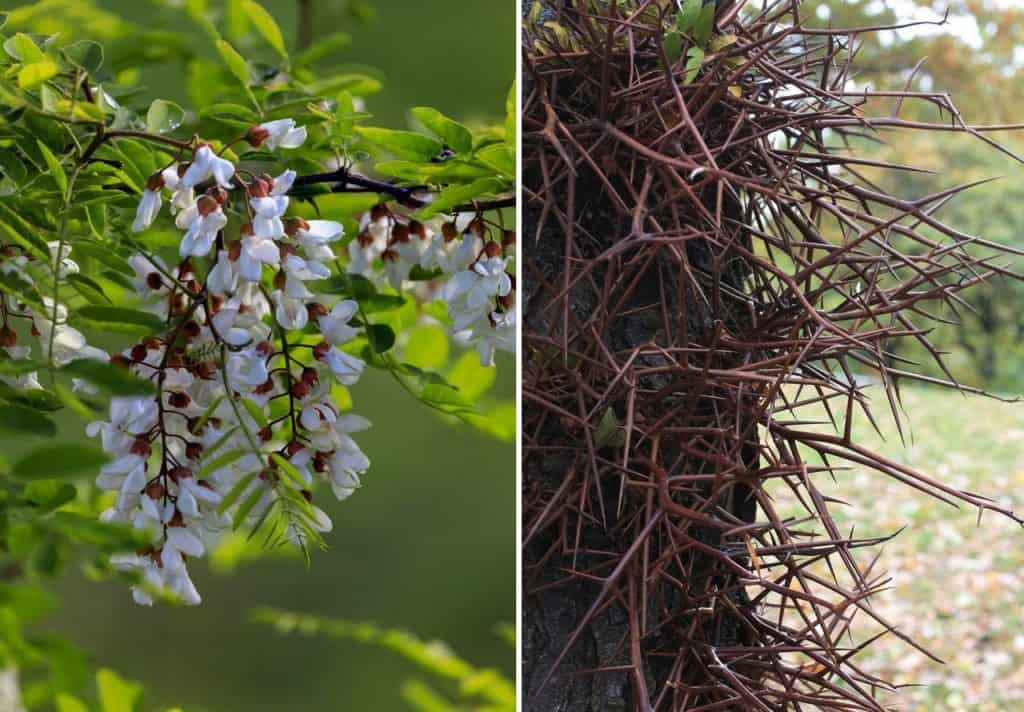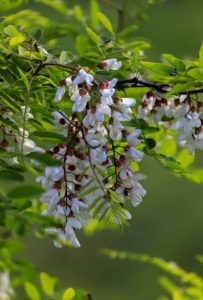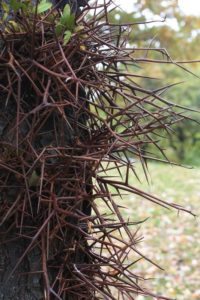
Black Locust (also known as “False Acacia”) and Honey Locust are tall, thorny trees, both members of a pea family. They are somehow similar but with a few differences.
In woodworking, both Black Locust and Honey Locust are used where hard and strong wood is needed. Black Locust is the more durable type and common for exterior installations while Honey Locust is less resilient but easier to work with.
Their differences may shape your opinion and help in deciding which you’ll like more for different purposes – either you want to plant it in your garden or you want to use their wood for different projects. Read on for more details.
What Is the Origin of Black and Honey Locust?
You can find both Black Locust and Honey Locust almost everywhere in the United States except in Oregon and Washington where you will only find Black Locust. Both of these trees originate from the United States- Black Locust comes from southeastern parts of the United States and the Honey Locust originates from the central-eastern region.
Appearance and Characteristics of the Trees
Size and Appearance
Black Locust, also known as a Robinia pseudoacacia is a tree that can go up to 50 feet high. It has a straight trunk that’s dark and grayish and stems that almost appear to be curly, growing in zig-zag. It is said that this tree got the Black Locust name because of the darker bark.
The opposite of that, Honey Locust (Gleditsia triacanthos) can grow taller than the Black Locust – 60 to 100 feet tall. This tree is wider than the Black Locust with an open canopy and short main trunk. Its bark is similar but a bit lighter than the Black Locust one – greyish or light grey. Stems are almost the same as the Black Locust stems.
Leaves
Leaves on both trees are usual for the trees from the pea family – long and compound. The leaves on the black locust can grow up to 14 inches long, while the leaves on the Honey locust are a bit smaller – they rarely grow more than 8 inches.
The color of the leaves is different as well. Leaves on the Black Locust are dark green to yellow-green in the fall. Leaves on the Honey Locust are bright green in the peak of the season and will go a bright yellow in the fall. They both have thorns – Black Locust thorns can grow up to 1/2 inch and they always grow in pairs while the Honey Locust tree has some distinct big, reddish to brown thorns that can branch into three points along the stems. They can be found growing individually or in big clumps.
Honey Locust has more thorns than you’ll find on the Black one.
Seed Pods
Both trees have tiny and smooth seed pods. They look very similar but the main difference is in size. Black Locusts seed pods are smaller than the ones that come from Honey Locust tree – the first one’s seed pods will grow up to 4 inches long while the Honeys will grow up to the length of 14 inches.
Using Locust in Woodworking
Black Locust
Black Locust wood is very strong and hard. This wood has a good weathering characteristic and is comparatively durable.
However, working characteristics are mixed.
Although it has a straight grain, it has high density and hardness which will make it very hard to work with it. It has a moderate blunting effect on cutting edges and will respond good to steam bending and lathe turning.
Workers should be a bit careful around this wood – it can cause eye and skin irritation.
There’s no odor or smell of any kind with this wood though.
It’s often used for
- flooring,
- furniture,
- fence posts,
- building boats, etc.
While its main use is indeed exterior installations, it is also not uncommon as wood in furniture-making and cabinetry in some regions. This is because some people find their grain and golden hue appealing (source).

Credit: Androstachys, source: Wikipedia, license: Public Domain.
Honey Locust
Example of a Honey Locust piece for woodworking or wood turning (find more here).
On the other hand, Honey Locust wood is moderately durable and can attract insect attacks. This wood is also heavy and very hard to work with, especially by hand and machine tools but will respond well to other ways of shaping it (e.g. in industrial processing).
Honey Locust wood is safer than the one we mentioned before, there are no reported side effects or health risks.
It can also be used for
- fence posts,
- furniture,
- utility lumber, and
- turned objects.
The sapwood has a yellowish color while the heartwood comes with a brownish or reddish tint. Besides exterior uses, it is therefore also used for furniture or decorative pieces (source).

Credit: Roger Culos, source: Wikipedia, License: CC BY-SA 3.0 .
Differences between Black and Honey Locust
There are many differences between these two trees and the experiences of working with them.
Black Locust wood has different pores that are packed with tyloses while the Honey don’t.
Further on, Honey Locust is much more similar to Kentucky Coffeetree than to the Black Locust tree – they don’t share the similarity in the color, grain or anatomy.
Black Locust wood can be found with more green or yellow tinge that can turn into a golden color, while the Honey Locust has a redder and orange tint.
As the timber of both trees is hard and heavy, using it for woodworking requires some skills and experience. Both types are therefore not the ideal choices for absolute beginners.
Conclusion
Both types of trees produce lumber that is not easy to work with. Black locust wood is harder and more durable and therefore often used for exterior installations. But its hardness makes working with this type difficult, and touching it may cause skin irritations.
If you wish to use black locust for woodworking, you can get it e.g. on Amazon.
Honey locust wood is safer to work with but it is similarly hard to process. While it is also hard, it is less durable as it is prone to insect attacks.
If you wish to compare Black and Honey Locust with other alternatives, read our other articles on different types of wood.



